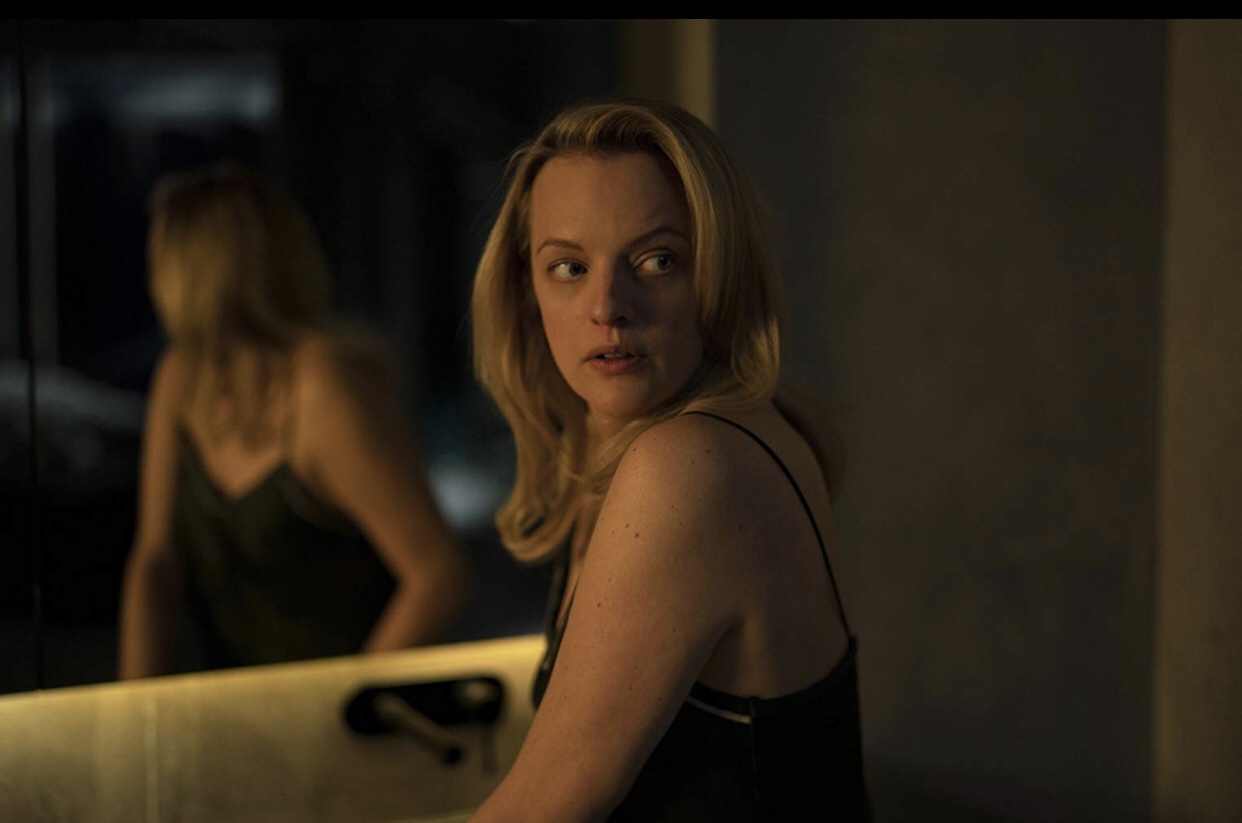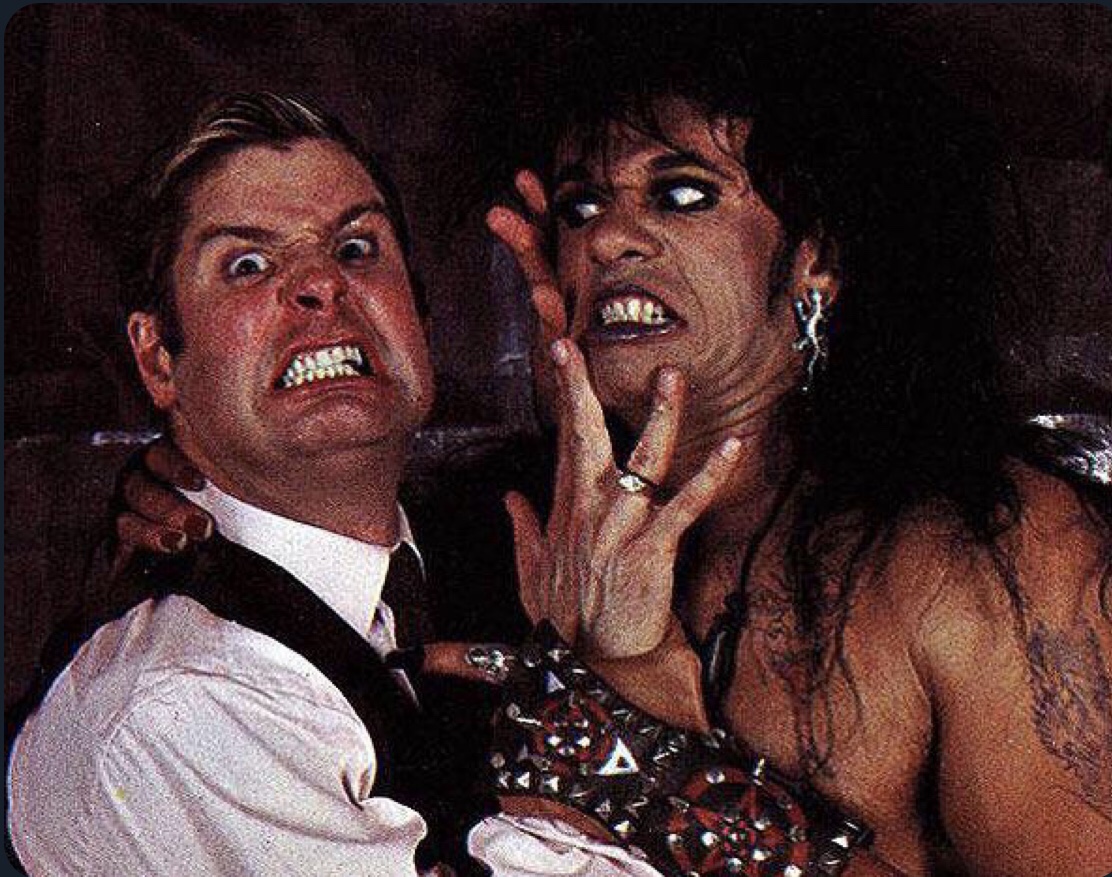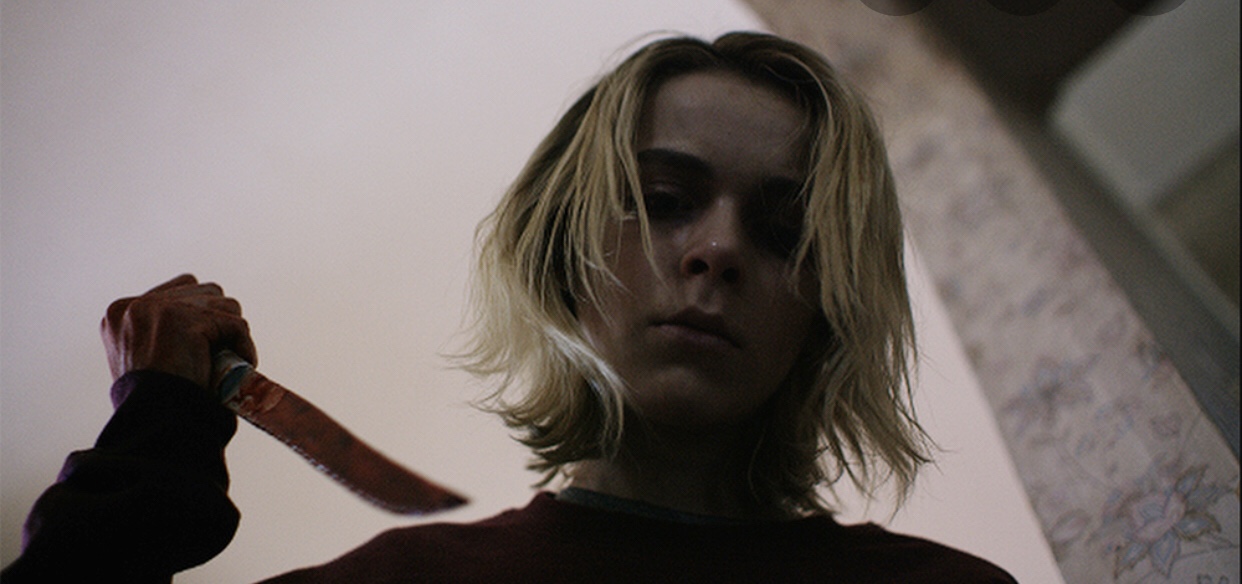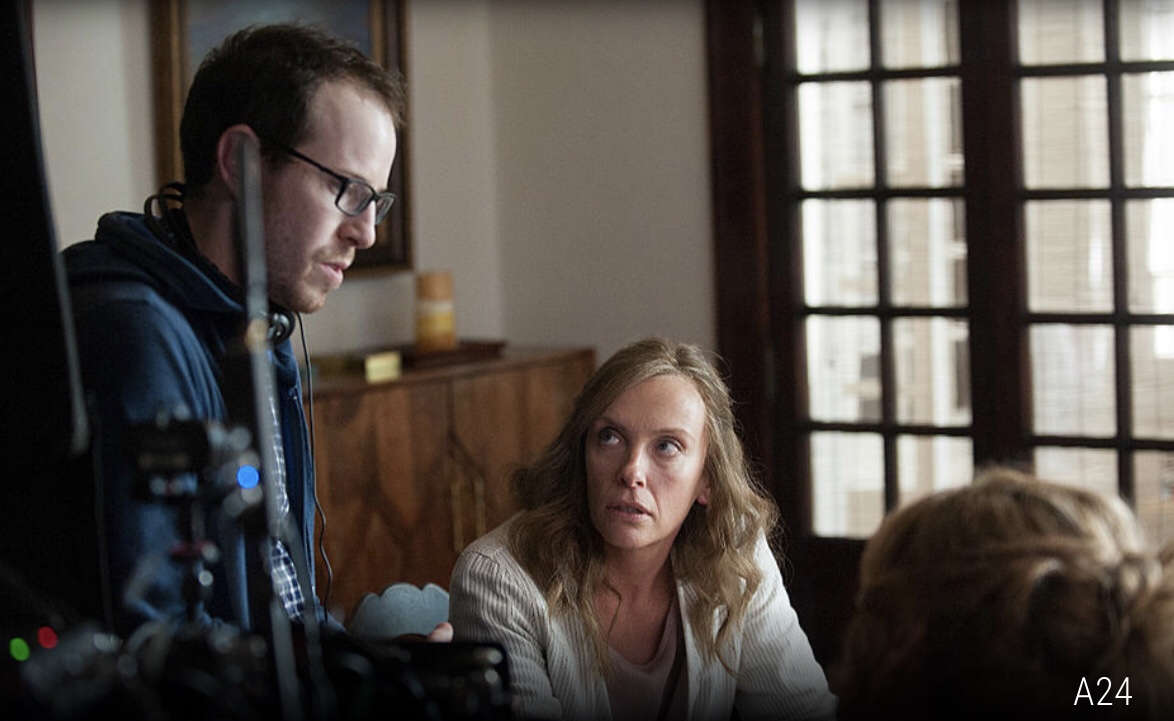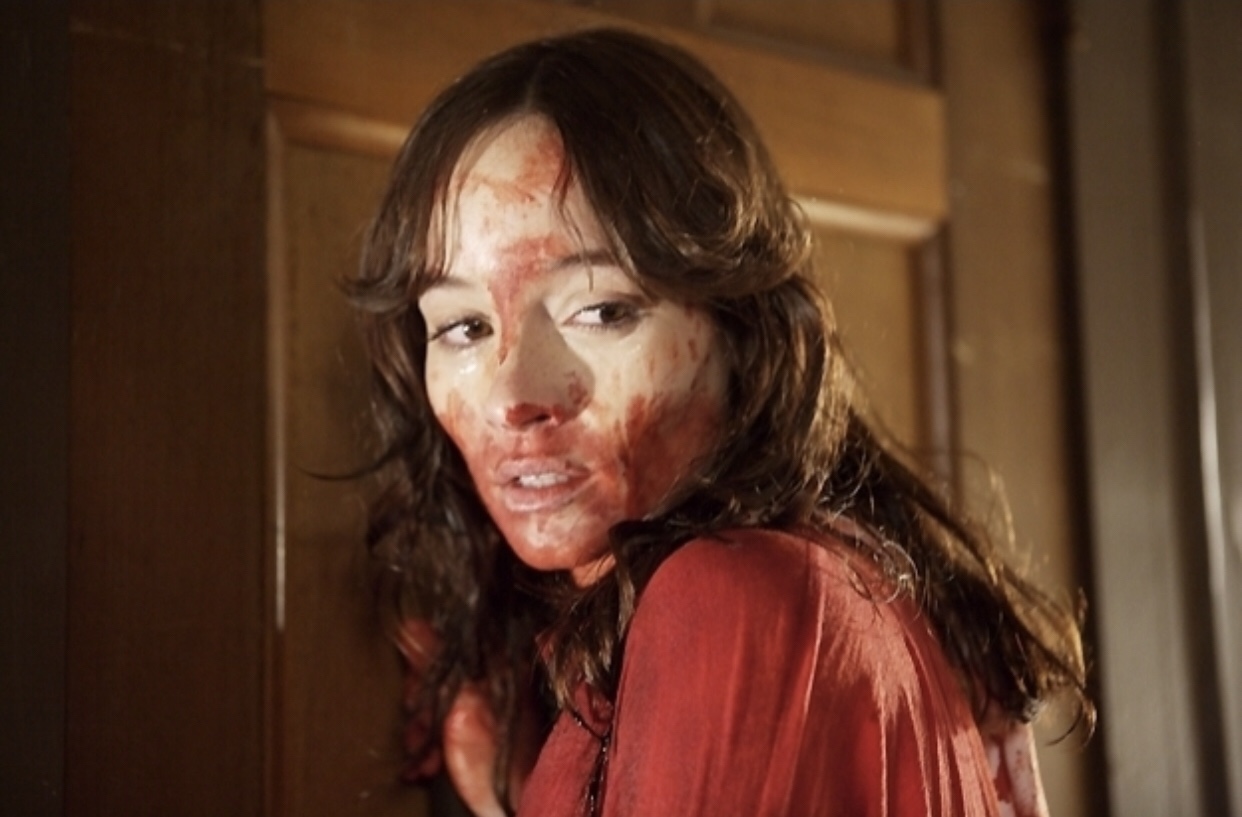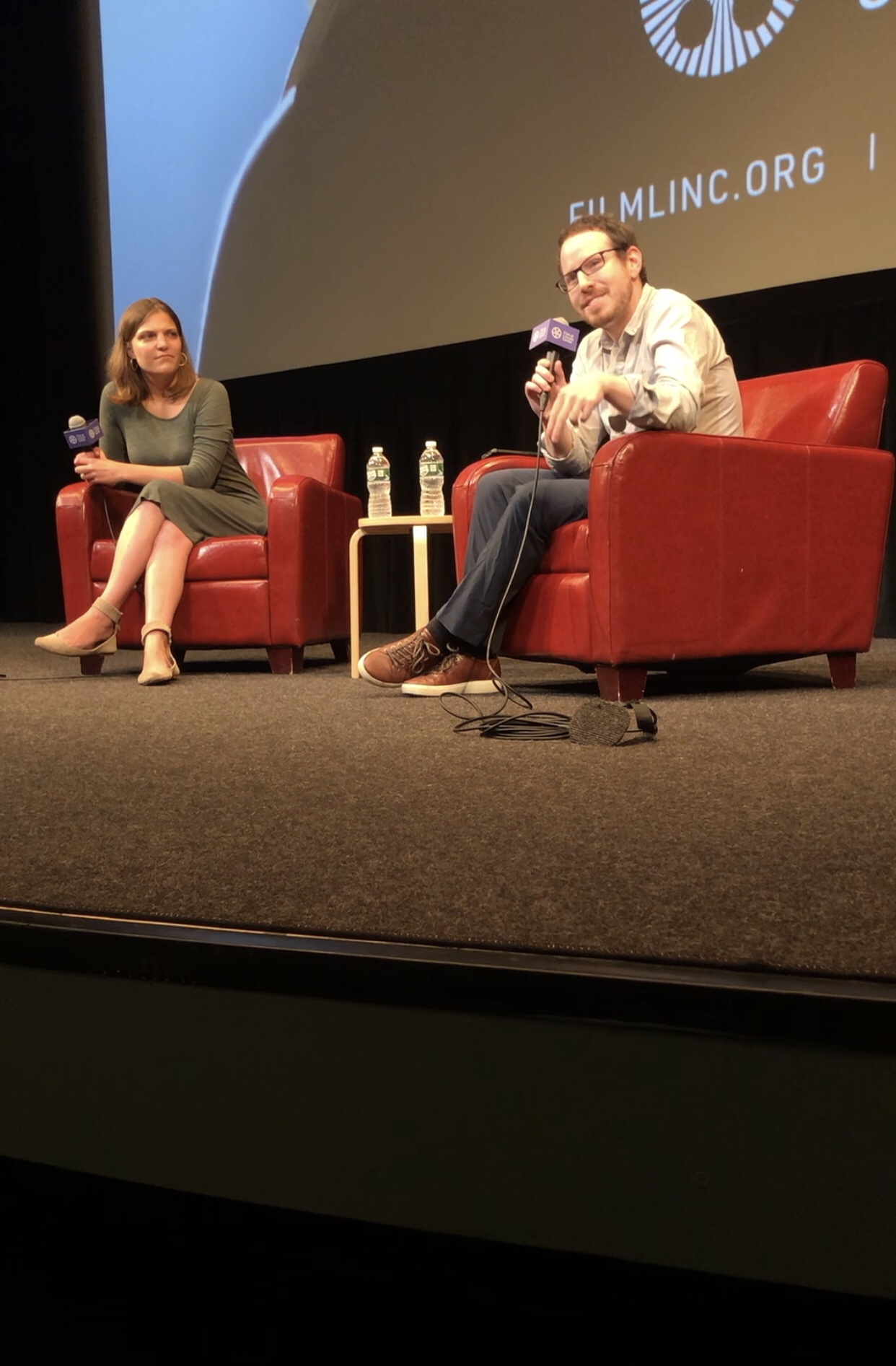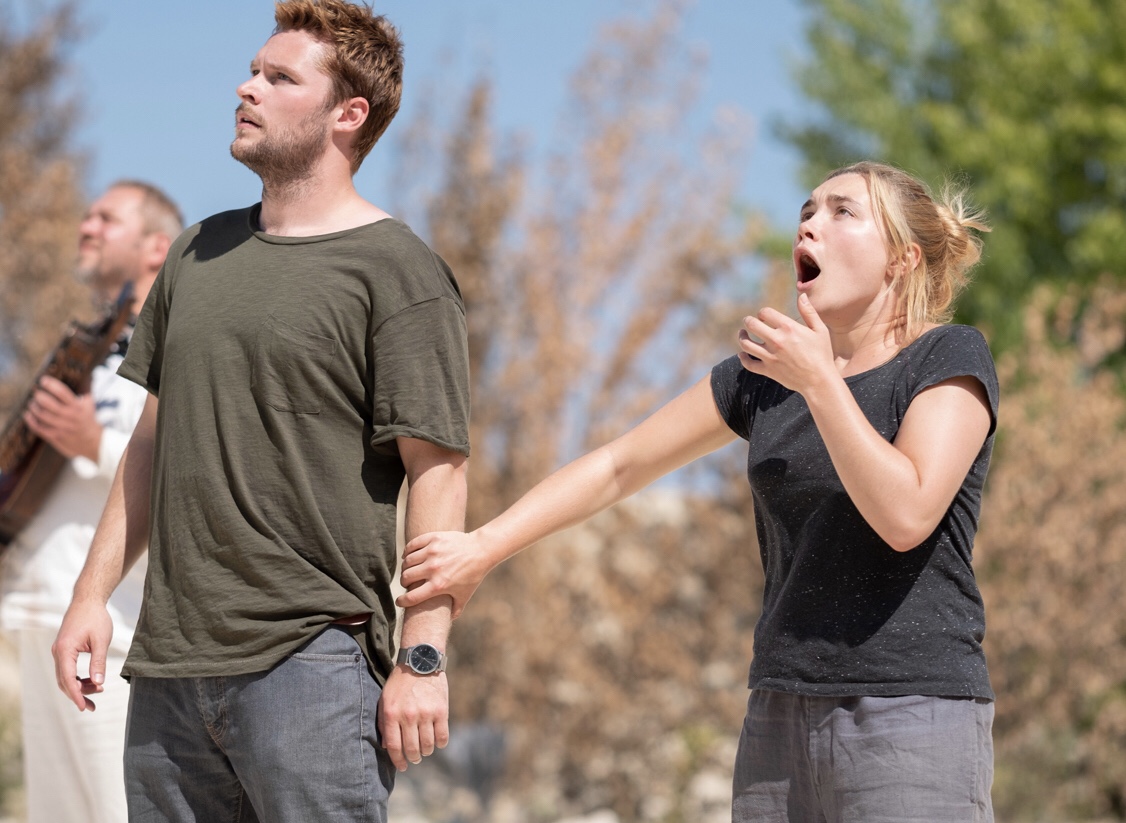(Some time ago I wrote this piece for a site that thrusted it behind a paywall so I’m releasing the words because fuck a paywall.)

Her body shivers, thuds to the floor. She’s heavy breathing. A satisfied smile spreads across her face.
On the surface, one would think that description came straight out of an erotica script like 9 ½ Weeks or served as the inspiration for a YA, coming-of-age novel about a young woman exploring her body for the first time. However, those moments of eruptive, orgasmic pleasure are the key elements of Saint Maud, A24’s recent contribution to the religious horror subgenre that has much more on its, uh, mind than merely God-fearing. “Elevated” horror…literally.
And A24 knew exactly what they were doing when they cheekily touted “Your Savior is Coming” for the film’s marketing campaign tagline. In the film, the titular young, single Maud (Morfydd Clark) is a newly converted, devout Christian that takes her faith a little too seriously. She becomes a caretaker for a dying patient that often mocks her love for God— and by love, I mean, literal, orgasmic episodes (Maudgasms, if you will) in which she claims God is “physically in” her. She quivers; her body weakens. There’s more heavy breathing. And back-arching. And gasping.
We discover little about Maud’s past, aside from a did-she-just-kill-someone? opening flashback, but the sense of sexual repression is overwhelming. Her only sexually penetrative encounter in the film involving an actual human being is visibly unsatisfying (and ends horrifically.) She seems constantly disappointed in said encounters and seems to crave something otherworldly that she looks for in “God.” Her patient Amanda (Jennifer Ehle) even taunts Maud as far as describing her godly obsession as “Heavenly Father’s warm, hard, pulsing— (dick?)” before an offended Maud slaps her across the face.
A surface-level reading of the film would imply that Maud had an unethical past and uses her alleged, newfound faith to restore her “morality,” while a more affronting reading of the film implies that she’s just looking for something that most young, single women are searching for: mind-blowing orgasms to enhance her deepened sexual repression. I’d go as far as to say that Maud’s search for the unattainable O is really what she seeks in God. Maud wants to have sex with God. There. I said it. It’s dirty, probably even offensive to some— but honest. “I’ve got way more important things on my mind than fun,” she boasts…but does she? Lots of hetero women having sex with men are never afforded orgasmic pleasures in life nearly as much as they should be, so who could blame Maud for aiming…higher?
As a woman in my early thirties myself— with way fewer amazing sexual experiences under my belt than I hoped to have up until this point— I share Maud’s desperation. Awkward, unsatisfying, stingy, inattentive, and/or traumatic encounters with partners can (and probably will) permeate many sexually active people’s experiences— but especially so for young women, in which so often our bodies are more complicated when it comes to reaching that level of euphoria and are too often neglected the proper education or attention to achieve it. Studies suggest almost 60% of us have faked it in our day. Should the hetero ladies of the world have to pull a Maud and turn to God, just to feel…a religious experience during our physical romps?
Maud’s desperation for any connection, let alone a sexually gratifying one, is always met with humiliation. Maud is quietly envious of Amanda’s lovers, yet Amanda teases her relentlessly for it. She jerks off a random dude in the bar bathroom and gets nothing out of it. Attempts at smiling at strangers are one-sided. But the worst of all is her only attempt at actual intercourse with a guy, who she vigorously rides, while her shirt stays on, and who she doesn’t allow to touch her breasts. As her PTSD flashbacks creep in during the encounter, she hops off the guy and ends it. She says no when he tries again, but he rapes her. Maud calls to God and begs to not let her “fall” again, as if she was to blame.
As socially awkward as Maud is— and she is very awkward— none of her dissatisfaction is by fault of her own. Internalizing needs and suppressing sexuality is ingrained in young women from day one of womanhood: if you’re sexually curious and exploratory of your body, you’re told you’ll never grow up to be “wife” material; if you’re shy, choosy, or even abstinent, well, you’ll be inexperienced and boring in the sack when your time does come. Damned if you do and damned if you don’t, etc.
And at a certain point, when you’ve hit your so-called “sexual prime,” aka prime babymaking years, (so thirties? which is a ridiculously limiting notion to begin with, but bear with me) you’re supposed to have gained enough sexual confidence to know what you like and be able to communicate it to partners. But it’s the trappings of either not wanting to be “intimidating,” domineering— or God forbid, so enthralled in our own desires that we neglect the needs of our male bed cohabitants and get branded as less-than-stellar in bed— that continues to haunt our encounters. It’s true, something inherently selfish comes with the act of sex for both parties, (why else would either of us show up but to hopefully get off) however, even as modern feminism favors “getting hers” and evolves past slut-shaming, hetero sex, by design, still can feel tainted by the bending over backwards (literally) to please the guy, while not wanting to look, act, (or taste) anything less than porn-star perfect. To quote this writer, “I’m not one of those people who blame the patriarchy for everything from office temperature to traffic jams (same), but I do think that from a young age women internalize the idea that being assertive makes you a bossy, controlling bitch. We are taught that we should sacrifice our needs in favor of a man’s— or else risk pushing him away–slash–dying alone.” And the dying alone part is key here, I mean, look how Maud ends up.
Maud is so jaded with her quest for sexual euphoria with men at this point that she’s given up. Never the size queen, she even quips at one of Amanda’s friends that he could have an “8 inch cock” for all she cares, because she knows no quality that any dude could possess has the power to give her the ecstasy she so longs for. Only God gives her that. A coded masturbatory session in her bed, looking visibly horny with scratches all over her body, as if some(thing) was in the bed with her, she’s “fuller” (dirty!) of His love than ever before, and her body levitates off the ground— no other humanly pleasures have ever held a candle to that for her.
Similarly to how many of us act during that off chance we do finally get that mind-blowing sex we’ve been craving our whole lives, Maud’s behavior becomes erratic. God appears to speak to her and tells her to prepare to prove her devotion to him, and she’s completely whipped. “Can’t shake the feeling that you must’ve saved me for something greater than this.” She douses herself with flammables, burns herself to a crisp, and becomes His martyr, or so she believes. All for some exceptionally holy dick.
Moral to the story: educate yourself, listen to, communicate with, and stop repressing your lady partners when it comes to giving them the best sex they’ve ever had in their lives…and you’ll never have to worry about us turning to God.
Saint Maud is now streaming on Amazon Prime and Hulu.
